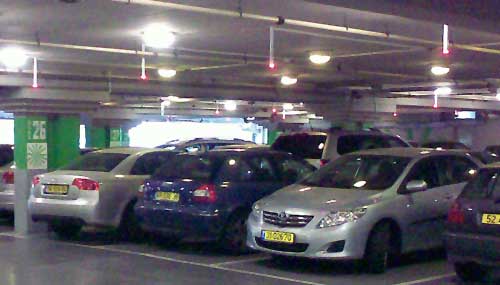See the mechanic working on my Renault Clio.
Do you know what he’s doing? Looks like he’s trying to squeeze his arm into a tiny space between some metal beams in the engine compartment frame. Why is he doing that? Because he wants to replace a burned out light bulb in the headlamp assembly.

Actually I carry spare lamps in the trunk, so I thought I could change the bulb myself. But after a long struggle I decided to take the car in to a garage shop, in the hope that the mechanic there could solve the riddle: how do you access the headlamp’s back side and extract the lamp?
Why, what’s the problem? Here is the problem:

The headlamp is wedged in behind the tube with the yellow cap, and is practically impossible to reach without disassembling the metal beam behind it. Yep… Renault designed this car so you need to take it apart to change a light bulb.
How many design engineers does it take to make it impossible to unscrew a light bulb?






 One of the first scientific facts you learn as a child is that snowflakes, those lovely art creations of nature, have a six-fold symmetry. And they do; the properties of water molecules see to that. Hence the standard symbol for snow (and freezing, and cold in general).
One of the first scientific facts you learn as a child is that snowflakes, those lovely art creations of nature, have a six-fold symmetry. And they do; the properties of water molecules see to that. Hence the standard symbol for snow (and freezing, and cold in general).

 So here is the right way of doing it! The sign to the right (found on another level of the same car park, strangely enough) leaves no doubt whatsoever: cars should exit to the right. I don’t remember if they had a similarly unambiguous sign for pedestrians, though those are usually marked with a running person for safety reasons. Anyway, isn’t this simple sign design convention something that every parking structure in the world should have?
So here is the right way of doing it! The sign to the right (found on another level of the same car park, strangely enough) leaves no doubt whatsoever: cars should exit to the right. I don’t remember if they had a similarly unambiguous sign for pedestrians, though those are usually marked with a running person for safety reasons. Anyway, isn’t this simple sign design convention something that every parking structure in the world should have?





 I’ve already
I’ve already 

 The Herman Miller
The Herman Miller 
